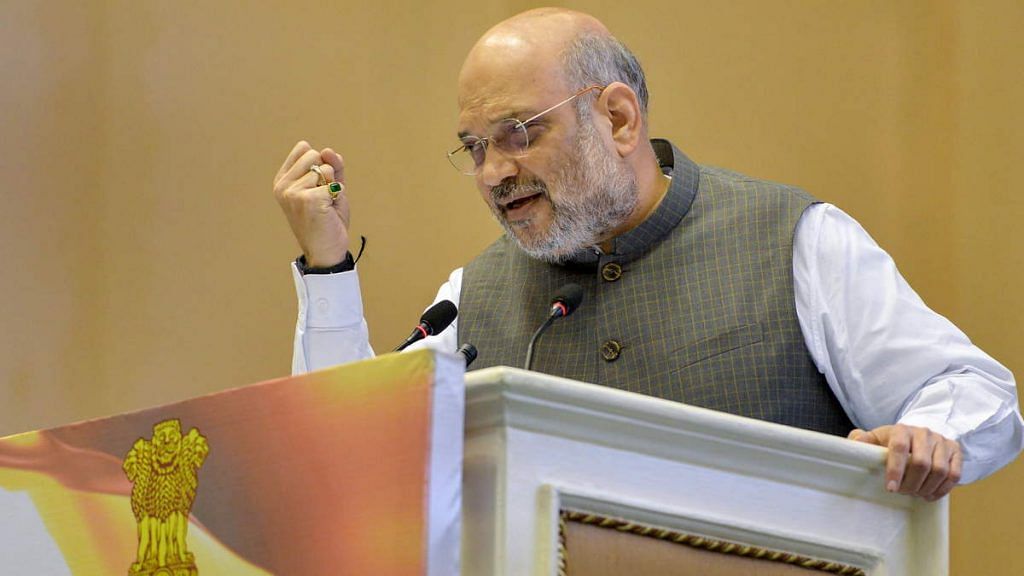Amit Shah’s BJP had been trying hard to manage headlines ahead of the Delhi assembly election. The citizenship protests were just not helping – domestically or internationally. And then came the violent attack on JNU campus – a godsend for the BJP. It distracts people from the anti-citizenship law protests. But it also helps project Prime Minister Narendra Modi as a saviour against the so-called “tukde-tukde gang”.
The Delhi Police has initiated an inquiry into the violence at Jawaharlal Nehru University (JNU) campus on 5 January. So far, we do not know who the attackers were. But we know that this attack on students and teachers changed the headlines in the so-called national media. The focus shifted from the police excesses and government’s brutal crackdown against CAA protesters to ‘Leftist JNU’.
Parliament passed the Citizenship Amendment Act (CAA) on 11 December. The legislation, as stated by Home Minister Amit Shah, seeks to grant Indian citizenship to people belonging to Hindu, Sikh, Buddhist, Jain, Parsi, and Christian communities in Pakistan, Afghanistan and Bangladesh on grounds of religious persecution. It was a Hindutva project disguised as an act of cultural largesse for the persecuted minorities of the three neighbouring countries. It had all the ingredients of the Hindu-Muslim binary arithmetic of the BJP. But Amit Shah and PM Modi clubbed it with the nationwide National Register of Citizens (NRC) and ended up outraging a large section of India’s population. It was also beginning to take a political toll.
The BJP has failed to achieve from the CAA-NRC what it had hoped for – and gained something it never wanted – and this disrupted the party’s political calculations.
Also read: As Delhi gets set to vote on 8 Feb, here’s how AAP, BJP, Congress stack up
It did not bring any electoral dividend for BJP
Jharkhand voted in the assembly election in five phases. Barring the first phase on 30 November, votes were cast when the CAA debate was at its peak. BJP leaders, including PM Modi, raised the CAA in a big way. At an election rally, Modi said that “the NDA government saved the country by bringing the CAA.” At a rally in Dumka, he said that “those indulging in arson can be identified by their clothes.” He blamed the Congress for anti-CAA protests and urged the electorate to vote against the party. BJP president Amit Shah also joined him to raise the pitch in favour of the CAA in the election rallies.
But it all amounted to nothing as the voters rejected the BJP, which lost yet another state it had been ruling going into the election.
Also read: Dear pro-CAA Indian-origin protesters, you feed off US secularism but support Hindu Rashtra
It failed to create Hindu-Muslim binary
The movement against the CAA-NRC has brought Hindu and Muslim communities together. If the BJP was hoping to polarise Hindus en masse over the CAA-NRC protests, then that did not happen. Though Muslims participated in the protests in large numbers, the images that came out were hardly religious. The symbolism was largely secular and patriotic, awash with the tricolour of the national flag and Jai Hind and Bharat Mata ki Jai slogans. In many protest rallies, the participants held portraits of B.R. Ambedkar and M.K. Gandhi. The green Islamic flag was nowhere.
People who led the protests also came from different social groups. Bhim Army chief Chandrashekhar Azad led the movement at the Jama Masjid in Delhi. Yogendra Yadav led it at the Jantar Mantar. In Kolkata, the massive protest was led by West Bengal Chief Minister Mamata Banerjee; and in Patna, the anti-CAA dharna was led by Tejashwi Yadav. In Chennai, the huge anti-CAA rally was spearheaded by DMK president M.K. Stalin. Historian Ramachandra Guha coming out on the streets to protest against one of its policies is not exactly the image that the BJP wanted to send out.
Also read: Decaf Arvind Kejriwal – the safe, bland AAP chief and Delhi CM no one saw coming
CAA created fear among Dalits-tribals and dispossessed
As the BJP, knowingly or unknowingly, clubbed the NRC with the CAA, it led to apprehension among a large section of the people. S. Rukmini, a Chennai-based data journalist, has laid out in an analysis that the poor and underprivileged in India are also poor when it comes to government documents and records.
According to NHFS 2015-16 data, as quoted by S. Rukmini, for children under 5 years, the probability of a Scheduled Tribe (ST) child having a caste certificate is extremely low at 56 per cent. It shows the status of the underprivileged in terms of keeping legacy papers. The situation is similar for the other underprivileged social groups like Other Backward Classes (OBCs), Scheduled Castes (SCs), and Muslims.
So, it’s easy to see why poor, tribal people, SCs, OBCs and Muslims are fearful of the CAA-NRC because it will be difficult for them to produce legacy documents. Even though her study was limited to finding the capacity to keep documents for different social and economic categories, it gives us an idea about possible apprehensions among these social groups.
If Muslims are fearful of the NRC, it might not bother the BJP. But the SC/ST/OBC and tribals fearing the consequences of the NRC is the last thing that would sit well into the BJP’s scheme of things.
At least not before the crucial Delhi assembly election, where it is pitted against a formidable Arvind Kejriwal and his Aam Aadmi Party, which has not fallen prey to the CAA protests.
The author is the former managing editor of India Today Hindi magazine, and has authored books on media and sociology. Views are personal.
